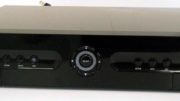If you have a Genie DVR or client, you know that it comes with a new remote. Sure, it’s smaller and looks a whole lot different, but it’s still a DIRECTV remote, right? It sure is, and it can be used to control older equipment in IR mode. (It’s also available here.) However, it can’t be used for RF, and the new Genie equipment can’t use the older RF remote. Clearly, something has changed.
The Genie remote uses RF4CE technology instead of DIRECTV’s own proprietary technology, and that’s why the two aren’t compatible. RF4CE technology brings a lot of benefits to the table and DIRECTV was wise to move to RF4CE and away from its own RF.
Two-way communication
The most important improvement with the new remotes is two-way communication. Older DIRECTV remotes did have some two-way communication but it was only used for initially programming the remote. The new remote is constantly communicating back and forth with the receiver it’s paired to. This means a stronger signal can be sent without problems with “keybounce” (when the receiver thinks you’ve pressed the button twice even though you only pressed it once.) When you press a button, the receiver responds that it received it, and so the remote stops sending it. Simple as that.
This level of communication takes power, so Genie remotes have advanced power management that can help you know when your batteries are getting weak before they run out completely.
The two-way communication that the Genie remote does is why no older DIRECTV receiver can use it for RF mode… older receivers can’t broadcast remote control signals.
Open Communication
DIRECTV’s remote is now based on an open standard called RF4CE. It’s a subset of the Zigbee standard for open communication between devices and it should mean that eventually, any manufacturer could easily create a remote for DIRECTV devices. To our knowledge, DIRECTV hasn’t published its codes for public use, but they could. Not only that, because the standard is open, it would be a lot easier for a manufacturer who wanted to capture those codes to do so.
As of yet, there hasn’t been any manufacturer willing to make an RF4CE remote for DIRECTV equipment other than DIRECTV. Why? Most manufacturers are very focused on IP Control at the moment, in other words controlling your device through its network connection instead of through a traditional IR or RF connection. With IP control you can control a device from anywhere in the world just like you were in the same room. Major manufacturers have been cranking out IP control systems and people seem to like the idea of using smartphones or tablets as remotes. As long as that remains the current fashion, there probably won’t be a lot of movement on RF4CE remotes.
The future of RF4CE
Unfortunately it’s hard to know what RF4CE’s future is. It’s a really, really good way of controlling a device, but right now the whole industry is focused on smartphones and tablets rather than physical remotes. That’s held back any changes in remote control technology for several years. People may come back around to the idea of a separate physical remote and they may rediscover RF4CE and its robust framework. When that happens, DIRECTV will be ready.





